How Starbucks' Howard Schultz turned rags into riches and maintained the moral compass of the largest coffee chain on earth
Schultz was born on July 19, 1953, in Brooklyn, New York. In an interview with Bloomberg, he said growing up in the projects — "loosely described as the other side of the tracks" — exposed him to the world's wealth disparity.

He experienced poverty at an early age. When Schultz was 7 years old, his father broke his ankle while working as a truck driver picking up and delivering diapers. At the time, his father had no health insurance or worker's compensation, and the family was left with no income.

Source: "Pour Your Heart Into It"
In high school, Schultz played football and earned an athletic scholarship to Northern Michigan University. But by the time he started college, he decided he wasn't going to play football after all.
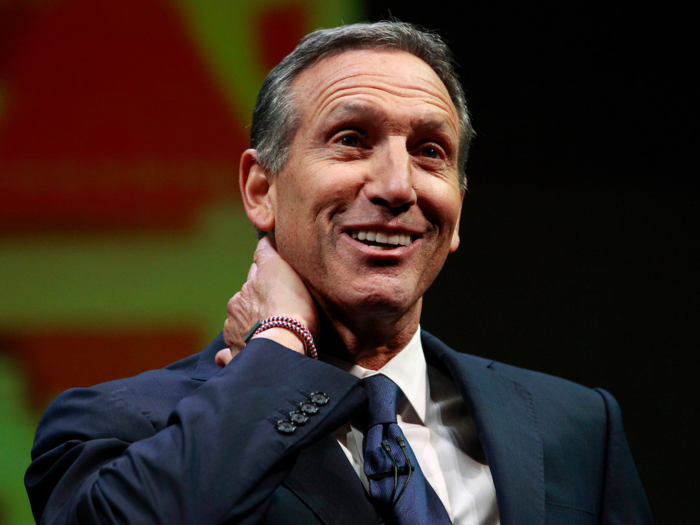
To pay for school, the communications major took out student loans and took up various jobs, including working as a bartender and even occasionally selling his blood.
Source: "Pour Your Heart Into It"
After graduation in 1975, Schultz spent a year working at a ski lodge in Michigan waiting for inspiration. He finally landed a job in the sales training program at Xerox, where he got experience cold-calling and pitching word processors in New York.
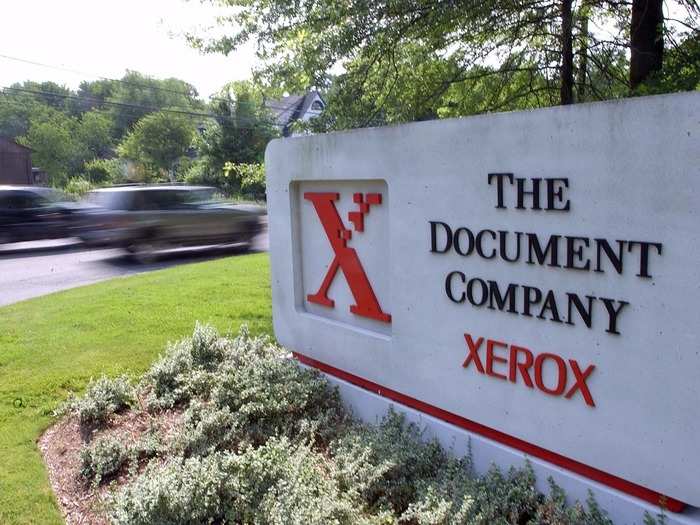
Source: "Pour Your Heart Into It"
The work didn't fulfill him, so after 3 years he left to take a job at Hammarplast, a housewares business owned by a Swedish company called Perstorp. There, Schultz ascended the ranks to vice president and general manager, leading a team of salespeople out of the US office in New York.
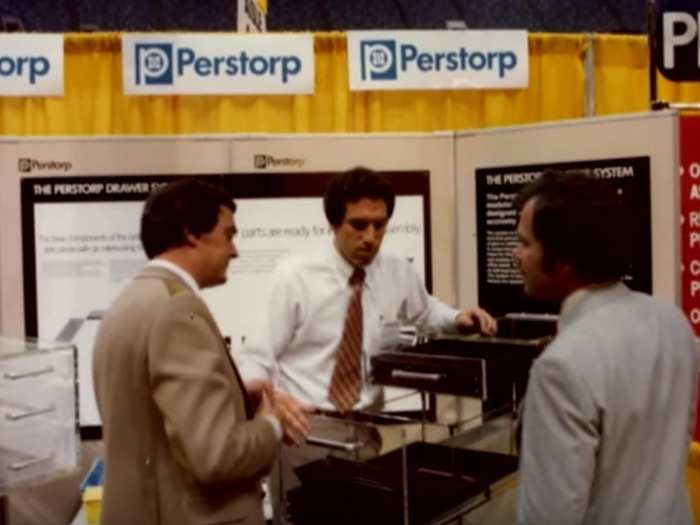
Source: "Pour Your Heart Into It"
It was at Hammarplast that he first encountered Starbucks. The coffee shop had a few stores in Seattle and caught his attention when it ordered an unusually large number of drip coffeemakers.
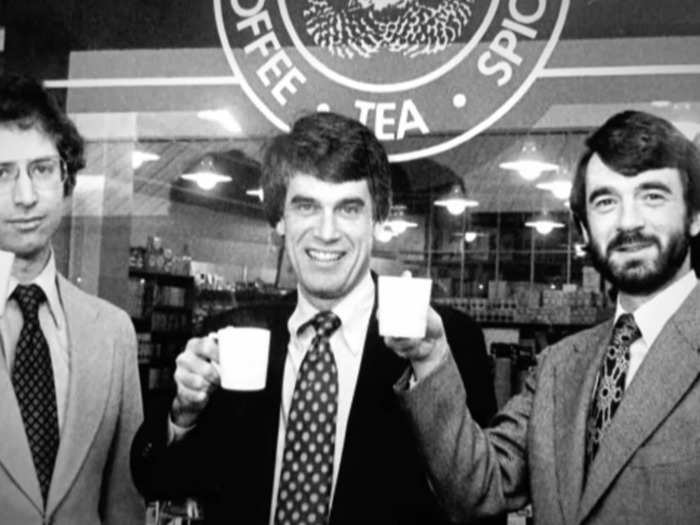
Intrigued, Schultz traveled to Seattle to meet the company's then owners, Gerald Baldwin and Gordon Bowker. He was struck by the partners' passion and their courage in selling a product that would appeal only to a small niche of gourmet coffee enthusiasts.
Source: "Pour Your Heart Into It"
A year later, the then 29-year-old finally persuaded Baldwin to hire him as the director of retail operations and marketing. At the time, Starbucks only had 3 stores, but they were selling pounds of coffee for home use, Schultz said.
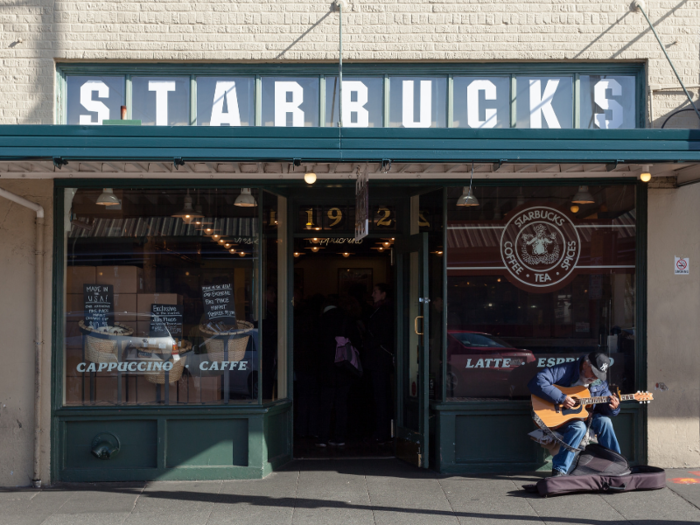
Source: Bloomberg, "Pour Your Heart Into It"
Schultz's career — and Starbucks' fate — changed forever when the company sent him to an international housewares show in Milan.
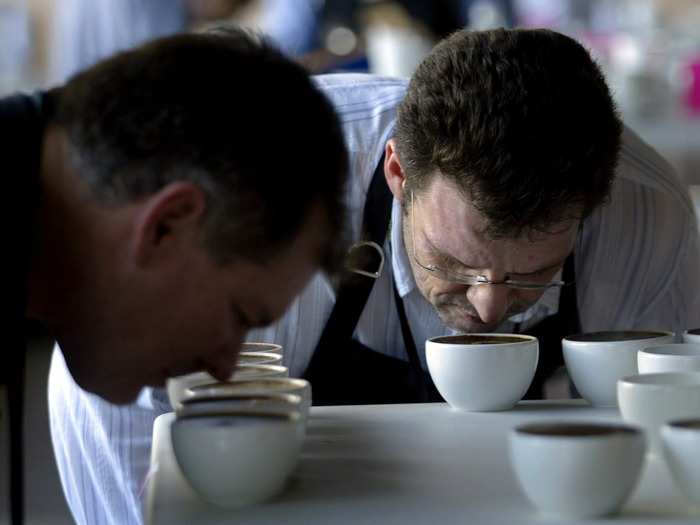
While walking around the city, he encountered several espresso bars where owners knew their customers by name and served them drinks like cappuccinos and caffè lattes. Schultz had an "epiphany" the moment he understood the personal relationship that people could have to coffee.
Source: "Pour Your Heart Into It"
In 1985, Schultz left Starbucks after his ideas to cultivate an Italian-like experience for coffee-lovers was rejected by the founders. He soon started his own coffee company: Il Giornale (Italian for "the daily").
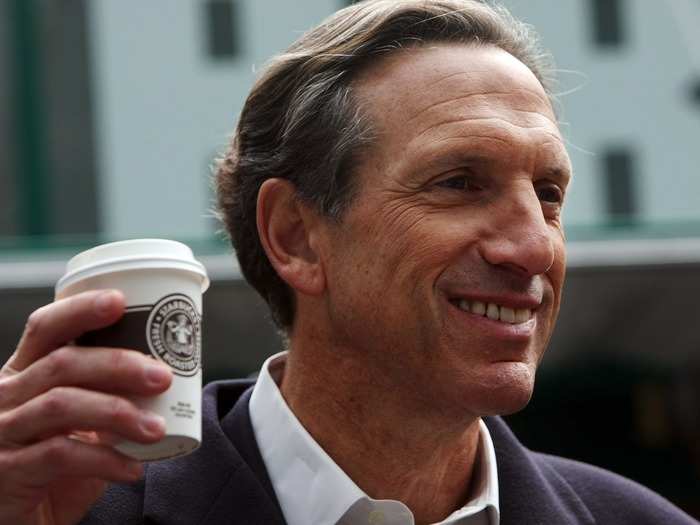
Source: "Pour Your Heart Into It"
In order to get Il Giornale off the ground, Schultz had to raise more than $1.6 million.
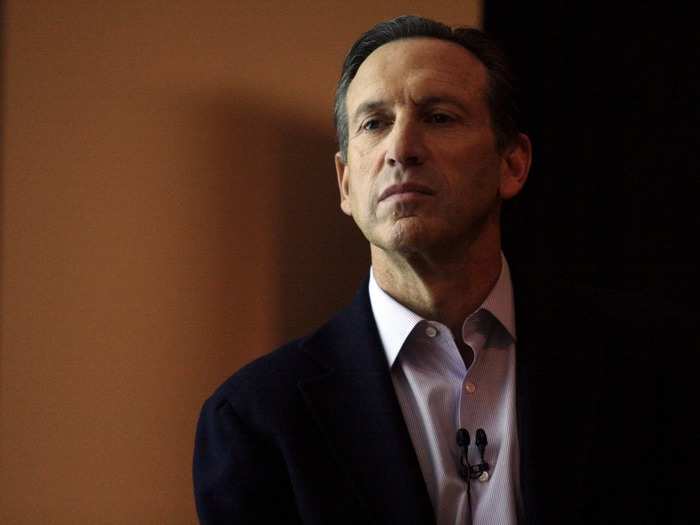
Schultz wrote in his book,"Pour Your Heart Into It":
"In the course of the year I spent trying to raise money, I spoke to 242 people, and 217 of them said no. Try to imagine how disheartening it can be to hear that many times why your idea is not worth investing in. ... It was a very humbling time."
Schultz spent two years away from Starbucks, wholly focused on opening Il Giornale stores that replicated the coffee culture he'd seen in Italy. In August 1987, Il Giornale bought Starbucks for $3.8 million, and Schultz became CEO of Starbucks Corporation. At the time, there were six stores.
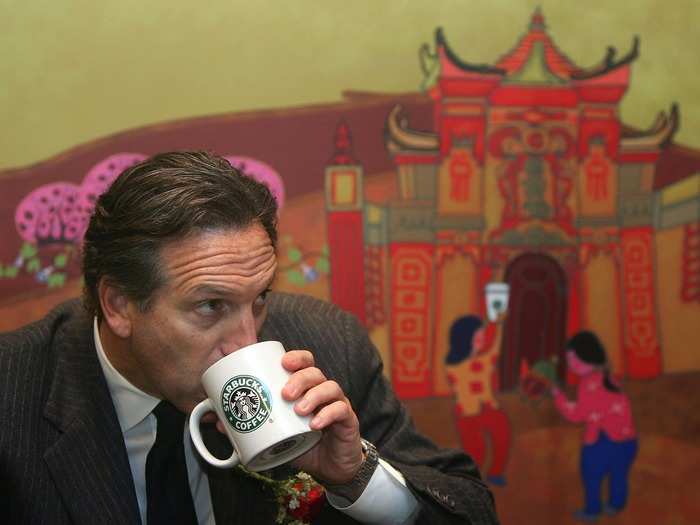
Source: "Pour Your Heart Into It", Bloomberg
America swiftly took a liking to Starbucks. In 1992, the company went public on the NASDAQ; its 165 stores pulled in $93 million in revenue that year.
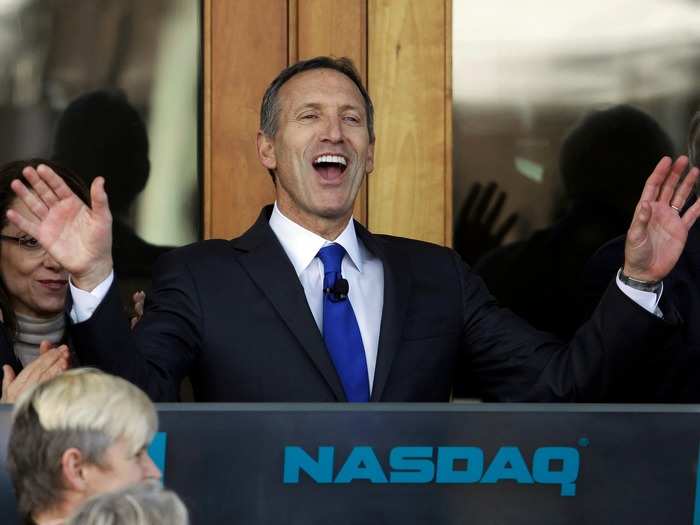
The world eventually caught on, and by 2000 Starbucks had grown into a global operation of more than 3,500 stores and $2.2 billion in annual revenue.
Starbucks' success made Schultz rich, and in 2001 he demonstrated his growing love for Seattle when he bought the NBA's SuperSonics for $200 million.
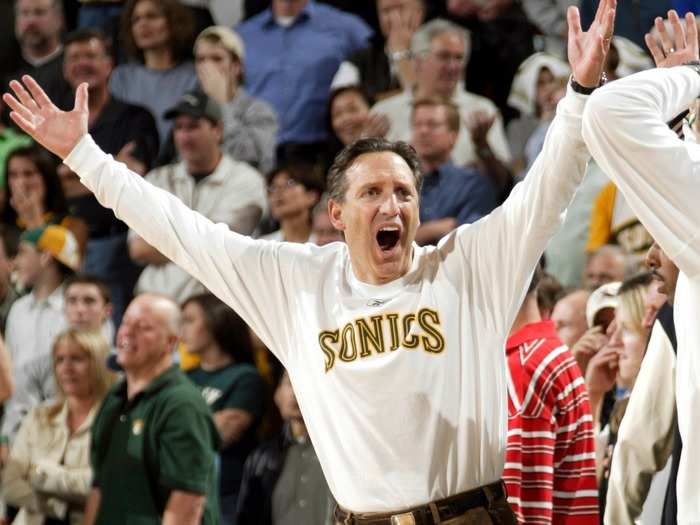
But the investment turned sour as the team struggled and Schultz feuded with players. In 2006, he sold the Sonics to a group of investors that moved the team to Oklahoma City, severely damaging his popularity in Seattle. He later called owning the team "a nightmare."
Running Starbucks came with setbacks, too. When Schultz returned as the company’s CEO in 2008 (he stepped back to serve as chairman during an 8-year hiatus) he spent a few years leading Starbucks' massive turnaround, tripling profits from $315 million to $945 million by 2010.
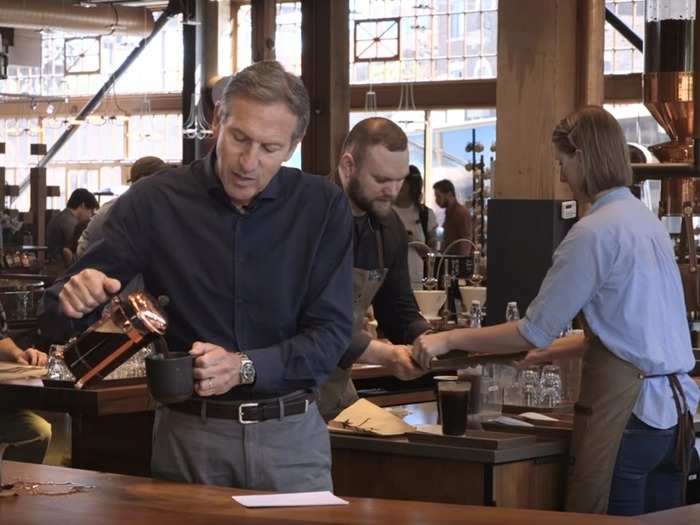
Schultz's sea change included temporarily closing 7,100 US stores in order to retrain baristas on how to make the perfect espresso.
During that period Starbucks also doubled its purchase of fair trade coffee to 40 million pounds (about 65% of its total product) to restore its commitment to sustainability. As of 2015, 99% of all Starbucks coffee is ethically sourced.
Throughout his career at Starbucks, Schultz has always prioritized his employees, who he calls "partners." Last year, the company announced it would pay employees' full four-year college tuition through Arizona State University's online degree program.
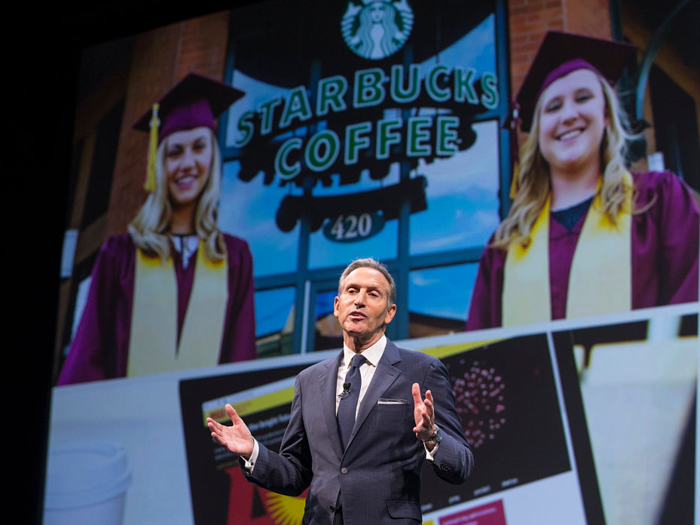
Largely because of his father's experience when he was injured, Schultz became one of the first retail corporations to offer every employee (including part-time workers) complete healthcare coverage as well as stock options.
Source: Associated Press
The company is already more than halfway to its goal of hiring 10,000 military veterans and their spouses by 2018. And as part of the "100,000 Opportunities Initiative" — an employer-led alliance helping launch the careers of underprivileged youth — the company will hire 10,000 16- to 24-year-olds over the next three years.
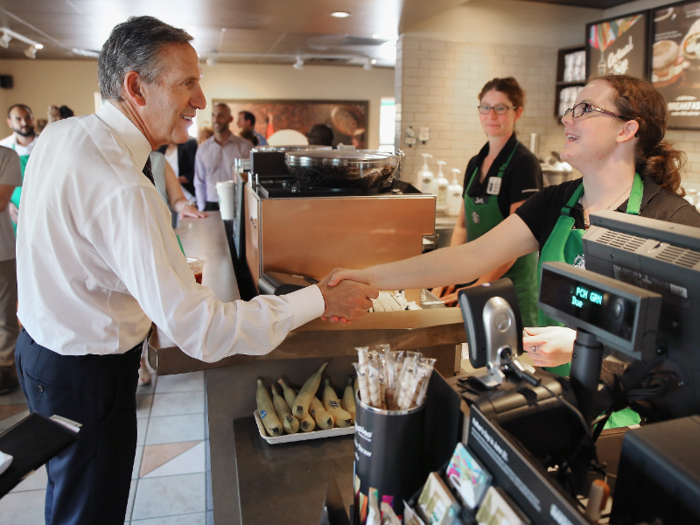
Schultz's ultimate goal for Starbucks is to use its global platform to better the world.
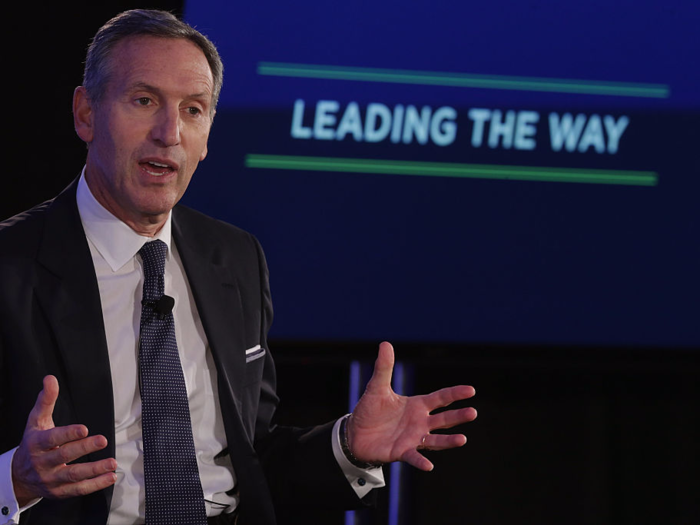
Schultz has wielded his influence to decry open carry gun laws, declare the importance of social diversity and inclusivity, and start a national conversation about race (even though that one backfired).
Recently, Starbucks launched FoodShare, a program to donate the stores’ leftover ready-to-eat meals to food banks across the US. The coffee chain plans to donate nearly 50 million meals by 2021.
In the last 28 years, Schultz has grown the company to include more than 22,500 stores in 70 countries bringing in an annual revenue of $19.2 billion.
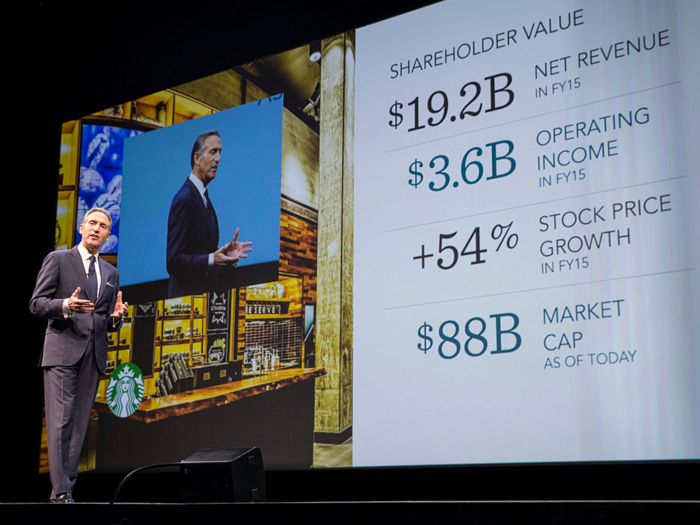
"I've always been driven and hungry," Schultz wrote in "Pour Your Heart Into It." "Long after others have stopped to rest and recover, I'm still running, chasing after something nobody else could ever see."
As Starbucks has continued to grow, so has Schultz's fortune. His net worth is estimated by Wealth-X to be at least $2.5 billion.
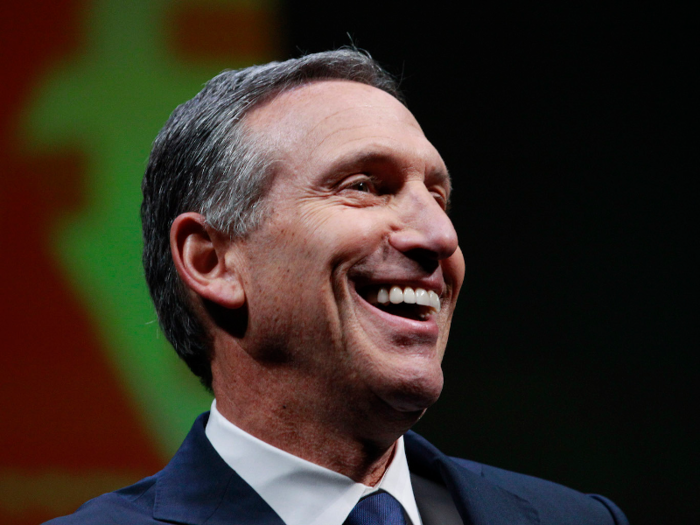
Schultz revealed in "Pour Your Heart Into It" that his tremendous professional success is a tribute to his late father, who "never attained fulfillment and dignity from work he found meaningful."
In his 2015 letter to shareholders, Schultz said he hopes Starbucks is "showing the world what’s possible when for-profit public companies go beyond what is expected and also do what is right — and what is in their hearts."
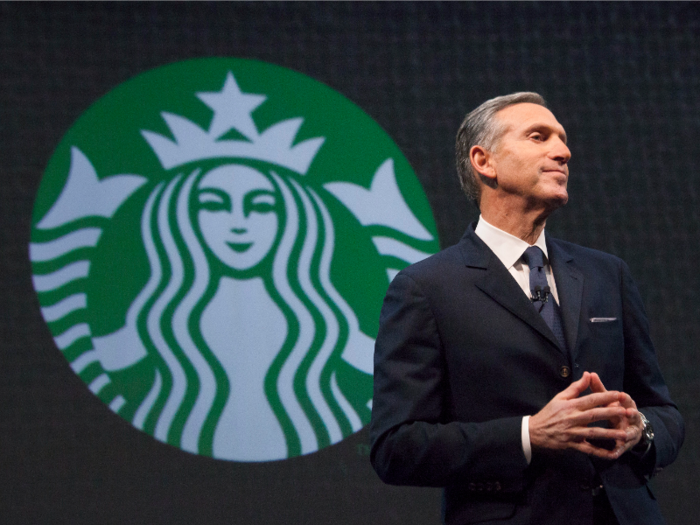
Popular Right Now
Advertisement